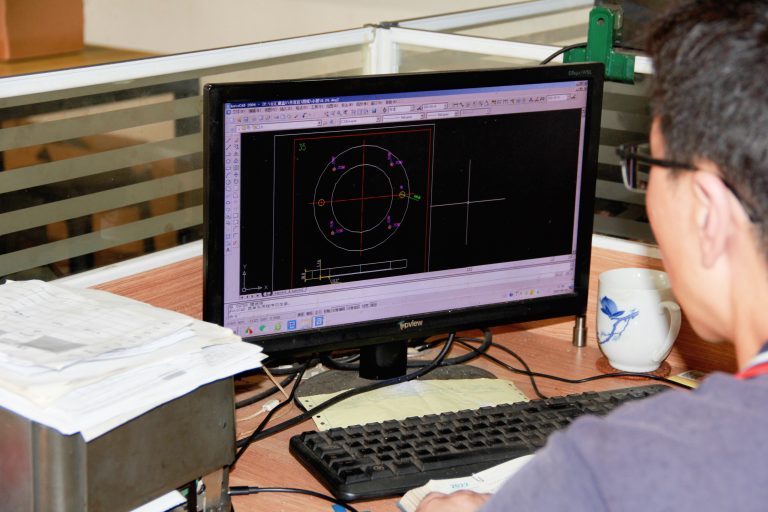In the ever-evolving landscape of technology, certain components play a crucial role, often behind the scenes. One such unsung hero in the realm of electronics is the iron core. This article will delve into the significance, evolution, applications, and future prospects of iron cores in electronic devices.
Table of Contents
1. Introduction
Iron cores have become indispensable in the world of electronics, serving as vital components in various devices. Whether it’s transformers, inductors, or other applications, the use of iron cores contributes significantly to the efficiency and performance of electronic systems.
2. The Evolution of Iron Core Technology
Historical Background
The journey of iron cores in electronics dates back to [relevant historical period]. Initially used for [specific purposes], iron cores have witnessed a remarkable transformation over the years.
Advances in Material Science
Recent strides in material science have paved the way for improved iron core compositions, enhancing their magnetic properties and overall performance.
3. Iron Core Components in Electronic Devices
Iron cores find application in diverse electronic components, with transformers and inductors being primary examples.
Transformers
Transformers, vital for voltage regulation, rely on iron cores to facilitate efficient energy transfer. The magnetic properties of iron enhance the transformer’s performance, ensuring minimal energy loss.
Inductors
Inductors, crucial for energy storage and transfer, leverage iron cores for their magnetic characteristics. This results in more effective inductor performance.
4. Benefits of Iron Core in Electronics
Improved Efficiency
Iron cores contribute to the overall efficiency of electronic devices by minimizing energy losses during magnetic induction processes.
Enhanced Performance
The magnetic properties of iron cores enhance the performance of electronic components, leading to more reliable and responsive devices.
5. Challenges and Solutions
Size and Weight Concerns
While iron cores provide numerous benefits, size and weight can be limiting factors. Engineers address these concerns through innovative design and material advancements.
Heat Dissipation
Iron cores may generate heat during operation. Implementing effective heat dissipation methods ensures optimal performance and longevity of electronic devices.
6. Applications Across Industries
Iron cores have found applications across various industries, including automotive, renewable energy, and consumer electronics.
Automotive
In the automotive sector, iron cores play a crucial role in the efficient operation of electronic systems, contributing to advancements in electric vehicles.
Renewable Energy
Iron cores support the renewable energy sector by enhancing the efficiency of power generation and distribution systems.
Consumer Electronics
From smartphones to home appliances, iron cores are integral to the functionality of numerous consumer electronic devices.
7. Iron Core vs. Other Core Materials
Comparison with Ferrite Cores
While ferrite cores have their applications, iron cores often outshine them in terms of magnetic properties and overall performance.
Advantages over Air Cores
Compared to air cores, iron cores offer superior magnetic characteristics, making them more suitable for demanding electronic applications.
8. Trends and Innovations
Nanocrystalline Iron Cores
Recent innovations include the development of nanocrystalline iron cores, exhibiting enhanced magnetic properties and contributing to miniaturization in electronics.
Integration with IoT
The integration of iron cores with the Internet of Things (IoT) opens up new possibilities for smart and interconnected electronic devices.
9. Future Prospects
Anticipated Developments
The future holds exciting developments in iron core technology, with advancements in materials and design expected to further improve efficiency and performance.
Emerging Technologies
Iron cores are likely to play a pivotal role in emerging technologies, such as [mention relevant technologies], shaping the future of electronics.
10. Case Studies
Successful Implementations
Explore case studies highlighting successful implementations of iron cores in electronic devices, showcasing their positive impact on productivity.
Impact on Productivity
Examine how the incorporation of iron cores has positively influenced the productivity and reliability of electronic systems in real-world scenarios.
11. Considerations for Engineers and Designers
Selecting the Right Core
Engineers and designers must carefully consider the application and requirements when selecting the appropriate iron core for electronic designs.
Design Best Practices
Implementing best practices in design ensures optimal utilization of iron cores, maximizing their benefits in electronic systems.
12. Environmental Impact
Sustainable Practices
Considerations for the environmental impact of iron cores include exploring sustainable practices in manufacturing and disposal.
Recycling Iron Cores
Efforts to recycle iron cores contribute to reducing electronic waste and promoting environmentally friendly practices in the industry.
13. Conclusion
In conclusion, navigating the tech landscape reveals the integral role of iron cores in electronic devices. From historical developments to future prospects, the journey of iron core technology is marked by continuous innovation, addressing challenges, and contributing to the advancement of the electronics industry.
14. FAQs
- Q: How do iron cores improve the efficiency of electronic devices?
- A: Iron cores minimize energy losses during magnetic induction processes, enhancing overall device efficiency.
- Q: What are the challenges associated with iron cores in electronics?
- A: Size, weight, and heat dissipation are common challenges, addressed through innovative design and material advancements.
- Q: Where are iron cores commonly used in the automotive industry?
- A: Iron cores play a crucial role in the efficient operation of electronic systems in electric vehicles.
- Q: How do nanocrystalline iron cores contribute to miniaturization in electronics?
- A: Nanocrystalline iron cores exhibit enhanced magnetic properties, allowing for smaller and more compact electronic designs.
- Q: What are the anticipated developments in iron core technology?
- A: Future developments include advancements in materials and design to further improve efficiency and performance.


